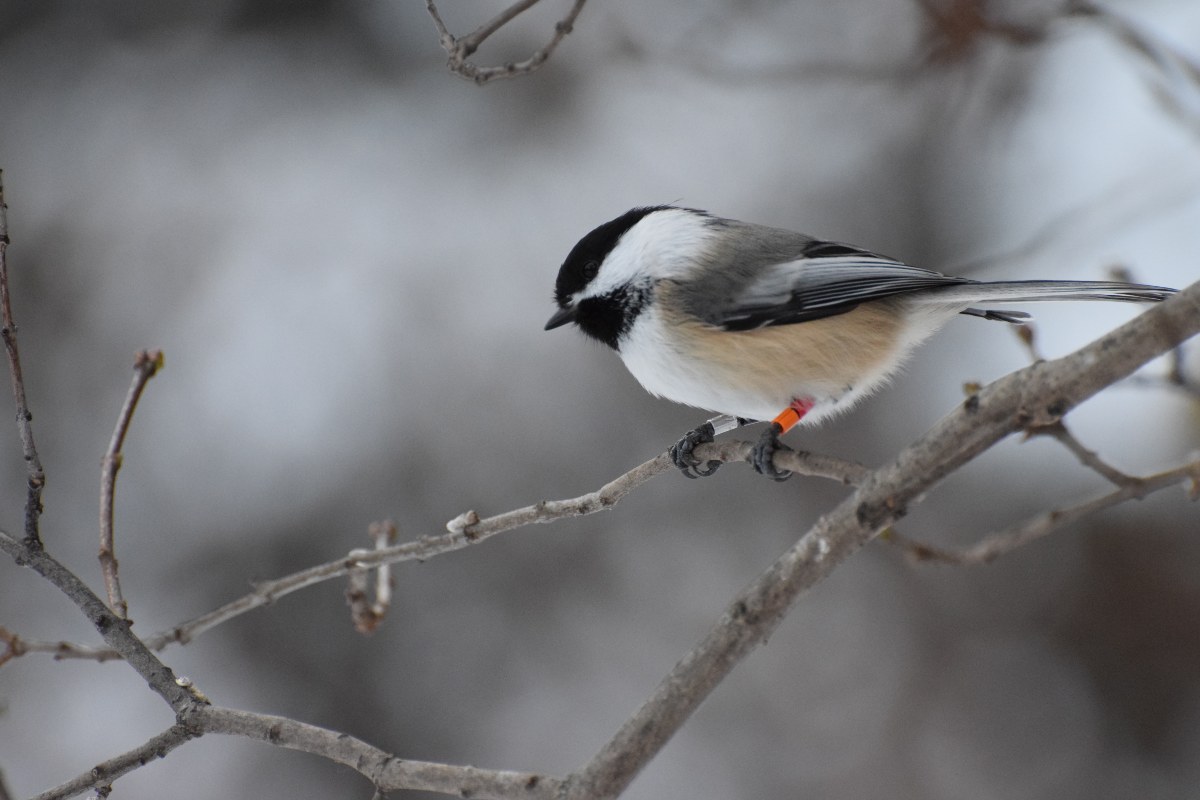
A new study led by graduate student Josue Arteaga-Torres in the Department of Biological Sciences examines chickadee behaviour, and took place in the University of Alberta Botanic Garden. Photo credit: Gail Kozun
Chickadees will change their feeding behaviour if they think predators are nearby, according to new research by University of Alberta biologists.
The study, led by graduate student Josue Arteaga-Torres in the Department of Biological Sciences, took place in the University of Alberta Botanic Garden. The researchers simulated the presence of predators using visual and auditory cues and examined how these cues affected the feeding behaviour of black-capped chickadees. The results show that chickadees are slower to return to feeders when they have seen visual cues that suggest predators nearby, while alarm calls made by other birds do not deter them for as long.
“These birds are constantly using information around them to make life or death decisions,” explained Arteaga-Torres. “The way birds respond to cues in their environment can vary greatly depending on the type of cue, but also it varies at the individual level. Some individuals will be more affected by particular sources of information than others.”
Black-capped chickadees are a subject of study due to their ability to survive challenging environmental conditions, such as Edmonton’s harsh winter, with very limited food supplies. “This makes them amazing creatures to study,” added Arteaga-Torres, who is studying under the supervision of Kimberley Mathot, an assistant professor and Canada Research Chair in Integrative Ecology.
The researchers also examined the relationship between the weather and the predator simulation.
“On average-temperature winter days, we found that the birds responded the same way to visual cues as they did to auditory and visual cues combined,” said Arteaga-Torres. “To our surprise, this pattern was weather dependent; it changed completely at lower temperatures when the combination had less effect than the visual cue alone.”
By knowing how animals respond to different sources of information in their environment and the interactions between cues about predation risk, scientists can develop ways to deter or attract certain animals, such as invasive species or animals who are endangered or at risk.
Jan Wijmenga, lead field technician, lab coordinator and database manager in Mathot’s lab, collaborated on this study. This research was funded by the Alberta Conservation Association and the Natural Sciences and Engineering Research Council (NSERC).
The paper, “Visual cues of predation risk outweigh acoustic cues: a field experiment in black-capped chickadees,” was published in Proceedings of the Royal Society B: Biological Sciences(doi: 10.1098/rspb.2020.2002).